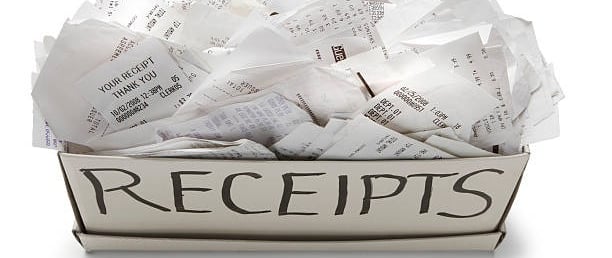How to Organize Receipts for Business Expenses: A Guide for Business Owners
Keeping your business expenses well-organized is crucial for maintaining accurate financial records, ensuring tax compliance, and making informed financial decisions. Properly managing your receipts is an essential part of this process.
ACCOUNTING & BOOKKEEPING
Ade O
7/13/20212 min read


Keeping your business expenses well-organized is crucial for maintaining accurate financial records, ensuring tax compliance, and making informed financial decisions. Properly managing your receipts is an essential part of this process. A well-organized receipt system can save you time, reduce stress, and provide a clear picture of your financial health. Here are some practical tips to help you efficiently organize receipts for your business expenses:
1. Establish a Filing System
The first step to organizing receipts is to create a filing system that suits your business needs. This can be either a physical filing system or a digital one. For a physical system, use folders, envelopes, or binders to categorize your receipts by expense type, such as office supplies, travel, meals, and utilities. Label each folder clearly and consistently file your receipts in their respective categories. For a digital system, use receipt management software or cloud storage to scan, store, and categorize your receipts. Digital tools can save you space and make it easier to retrieve receipts when needed.
2. Utilize Receipt Management Software
Leveraging receipt management software can streamline the organization process and reduce the risk of losing receipts. There are several apps and software options available that allow you to scan and store receipts electronically. Tools like Expensify, Receipt Bank, and QuickBooks enable you to capture receipts using your smartphone, categorize expenses, and generate detailed reports. Digital receipts are easier to search and organize, making it simpler to track your business expenses and prepare for tax season.
3. Reconcile Receipts Regularly
Make it a habit to reconcile your receipts with your financial records on a regular basis, such as weekly or monthly. Reconciliation involves comparing your receipts with your bank statements, credit card statements, and accounting software to ensure accuracy. This process helps you identify discrepancies, verify expenses, and maintain up-to-date financial records. Regular reconciliation simplifies tax preparation and minimizes the risk of errors or missed expenses.
4. Label and Annotate Receipts
When you receive a receipt, take a moment to label it with relevant information such as the date, expense category, and purpose of the expense. For physical receipts, write this information directly on the receipt or attach a note. For digital receipts, use tags and notes within your receipt management software. Clear labeling and annotation make it easier to identify and understand expenses when reviewing your records or preparing for an audit.
5. Retain Receipts for Tax Purposes
Ensure that you retain your receipts for the required period as mandated by tax authorities. In many countries, businesses are required to keep receipts for a minimum of three to seven years for tax purposes. Properly organized and preserved receipts help substantiate your expenses and ensure compliance with tax regulations. Store your physical receipts in a secure location, such as a locked filing cabinet, and back up your digital receipts regularly to prevent data loss.
By following these tips, you can effectively organize your receipts and maintain accurate records of your business expenses. An organized receipt system not only simplifies financial management but also provides valuable insights into your spending patterns, helping you make informed decisions and achieve financial success. Let us help you out if this is becoming a daunting task for you.
You can call us to discuss your bookkeeping needs. Contact us now!
Services
Review Financial Records
Monthly Bookkeeping Services
Year End Bookkeeping Services
Tax Advisory Services
Cleanup & Catchup Services
Accounting & Bookkeeping Training Services
Intuit, QuickBooks, and QuickBooks ProAdvisor are registered trademarks of Intuit Inc. EzeeBooks and QuickBooks are two separate entities, not related in any way or manner.
Contact
Support
ezbooks222@gmail.com
Office : 410-304-0116
Mobile : 410-304-0116
© 2025. All rights reserved.
Tailored bookkeeping solutions for small businesses.
EzeeBooks Solutions LLC is not a CPA firm and does not provide assurance services
